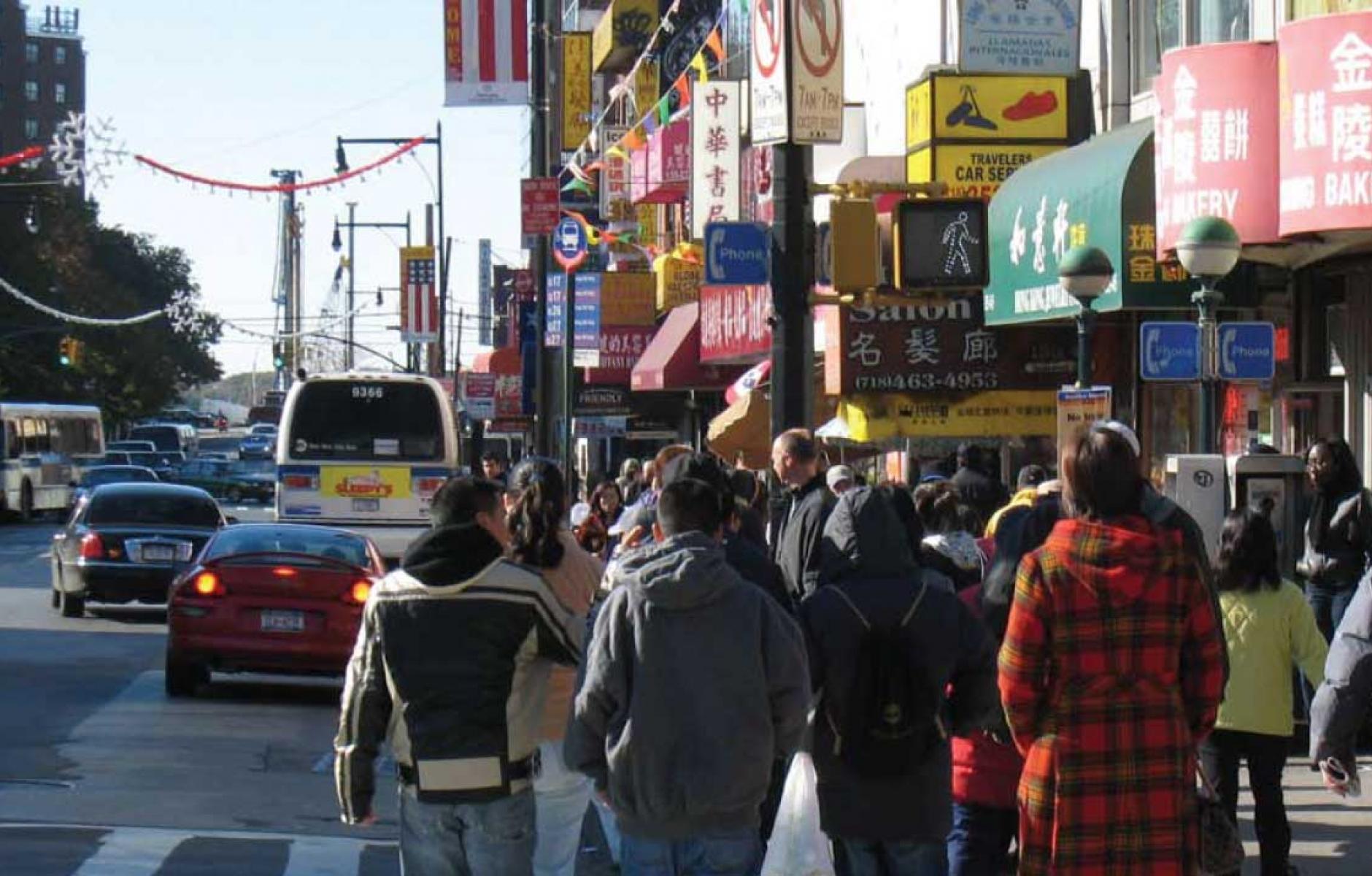
The good news on desegregation
Its rare that some obscure terminology from sociology becomes a part of our everyday vernacular, but “tipping point” is one of those terms. Famously, Thomas Schelling used the tipping point metaphor to explain the dynamics of residential segregation in the United States. His thesis was that white residents were willing to live in a mixed race neighborhood, but only when whites were still a comfortable majority of its population. The notion of a tipping point has a dour implication for neighborhood change, it implies that mixed race neighborhoods, when they occur, are unstable and temporary transitional states between longer and more durable periods of segregation.
A paper published earlier this year by Kwan Ok Lee in the Journal of Urban Affairs —Temporal Dynamics of Racial Segregation in the United States: An Analysis of Household Residential Mobility–looks at the processes of neighborhood change by race in the United States over the past four decades to see whether the instability of integrated neighborhoods implied by the “tipping point” theory is actually borne out in practice. The results are surprising.
Lee’s paper looks at data on the racial and ethnic composition of census tracts in the United States. Tracts are neighborhood-sized units developed by the Census Bureau that have an average population of about 4,000 persons. Lee classified each of these census tracts according to the race and ethnicity of its population into one of six groups (predominantly white, predominantly black, predominantly other, black-white, white-other, black-other and multiethnic). The exact definitions are complicated, but in general tracts with more than 80 percent of the population in one group were classified as predominantly in that group; multi-ethnic neighborhoods were those where no one group was a majority of the tract’s population (more details below). Lee’s paper traces neighborhood change in each of these tracts over two 20-year periods, 1970 to 1990 and 1990 to 2010. There’s a lot in this paper, but we think there are three particularly interesting findings.
First, the data show the growing diversity and modestly declining segregation of US neighborhoods. The share of all neighborhoods that were predominantly white in the US declined from 67 percent in the 1970-1990 period to 57 percent in the 1990-2010 period. Over this time period, the pace of transition to more racially mixed neighborhoods accelerated. One in four predominantly white neighborhoods in 1970 became racially mixed over the next two decades; in 1990 one in three of predominantly white neighborhoods became racially mixed. Similarly, the rate of transition in predominantly black neighborhoods also accelerated; about 19 percent of predominantly black neighborhoods in 1970 became racially mixed over the next 20 years; that fraction increased to about 24 percent between 1990 and 2010, as illustrated on the following chart.

Second, black-white neighborhoods became much more stable. Black-white neighborhoods were those between 10% and 50% non-Hispanic black, and less than 10% Hispanic or non-Hispanic Asian. Of black-white neighborhoods in 1970, forty percent transitioned away from being racially mixed in the 20 years between 1970 and 1990. Of the black-white neighborhoods in 1990, only 20 percent transitioned away from being racially mixed between 1990 and 2010; in effect, the rate of “tipping out” of integration declined by half.
Third, the number of truly multi-ethnic neighborhoods nearly doubled, from about 1.6 percent of all neighborhoods in 1970-1990 to about 3 percent of all neighborhoods in 1990-2010. The definition of multiethnic is tracts that were at least 10% non-Hispanic black, at least 10 percent Hispanic or non-Hispanic Asian, and at least 40 percent non-Hispanic white. Once they became multi-ethnic, from 1990 to 2010, about 90 percent of them remained multi-ethnic for the next twenty years.
In all, its now the case that predominantly white neighborhoods are more likely to become racially mixed (one in three) than racially-mixed neighborhoods are likely to become dominated by a single racial/ethnic group (one in five). And though they constitute a small share of the total, multi-ethnic neighborhoods are growing, and, once-established, persistent.
Lee also used data from the Panel Survey of Income Dynamics to follow the actual moves of thousands of families over several decades. He found that once families moved into racially mixed neighborhoods, they tended to stay in those neighborhoods, or when they moved, they moved to other racially mixed neighborhoods. He found that about 68 percent to 86 percent of black and white movers residing in racially mixed neighborhoods moved within their current neighborhoods or moved to other mixed neighborhoods during 1991–2009.
While much of our nation remains substantially segregated by race, Lee’s analysis points to at least a couple of hopeful signs. The pace of desegregation, as measured by the transition of neighborhoods from predominantly black or predominantly white to a more multi-racial mix has accelerated. And once established, it appears that multi-racial neighborhoods tend to stay that way, and that few households in such neighborhoods make subsequent moves that lead to re-segregation.




